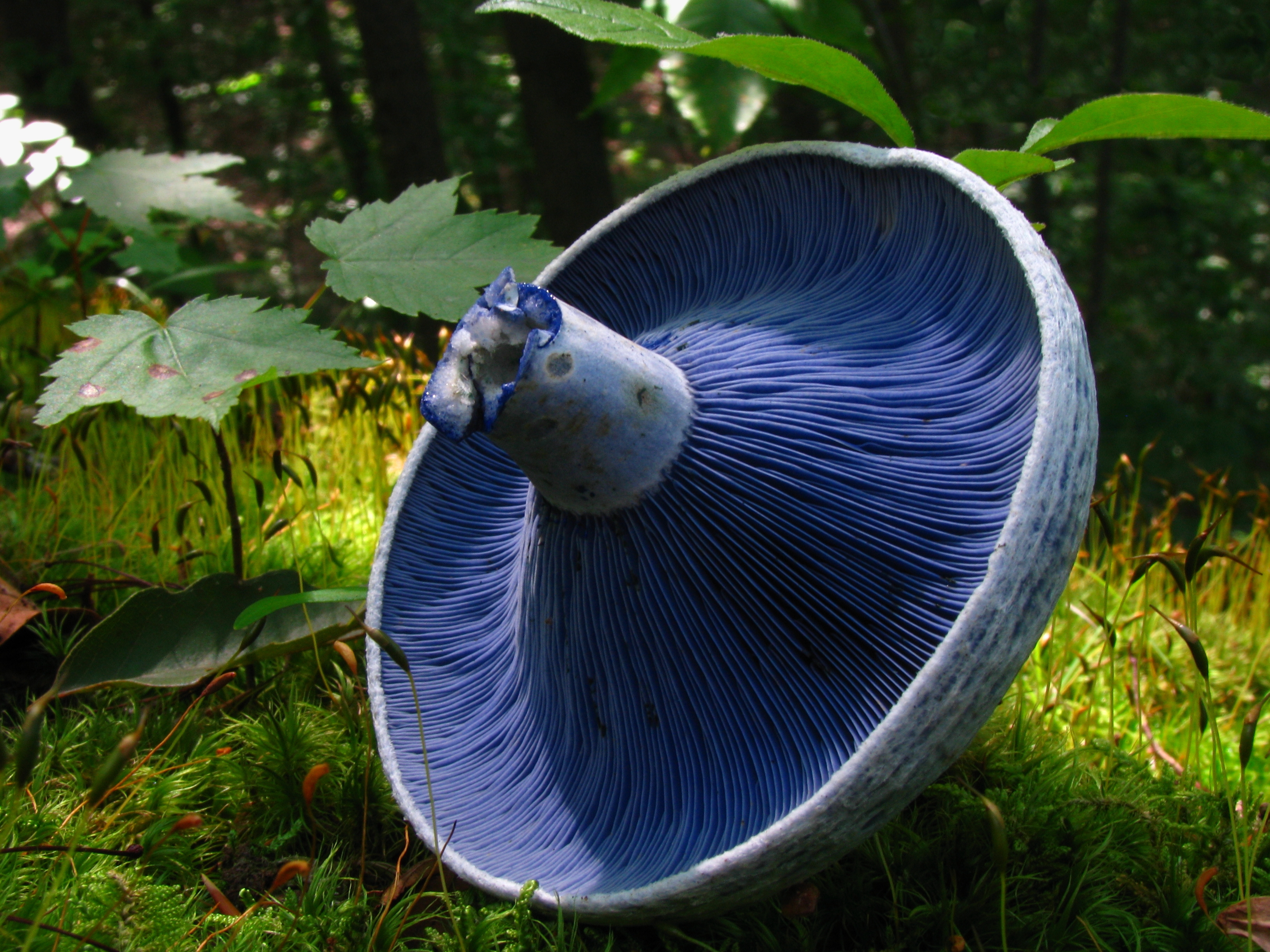- Proposed
- Under Assessment
- Preliminary Assessed
- Assessed
- LCPublished
Lactarius indigo (Schwein.) Fr.
Search for another species...
- Scientific name
- Lactarius indigo
- Author
- (Schwein.) Fr.
- Common names
 Indigo milk cap
Indigo milk cap Indigo lactarius
Indigo lactarius Blue lactarius
Blue lactarius Blue milk mushroom
Blue milk mushroom Indigo milk cap
Indigo milk cap Indigo lactarius
Indigo lactarius Blue lactarius
Blue lactarius Blue milk mushroom
Blue milk mushroom Azul
Azul Anil
Anil Hongo Azul
Hongo Azul Zuin
Zuin Zuine
Zuine Quexque
Quexque- IUCN Specialist Group
 Mushroom, Bracket and Puffball
Mushroom, Bracket and Puffball- Kingdom
- Fungi
- Phylum
- Basidiomycota
- Class
- Agaricomycetes
- Order
- Russulales
- Family
- Russulaceae
- Assessment status
- Published
- Assessment date
- 2024-12-29
- IUCN Red List Category
- LC
- Assessors
- Gregory Mueller (Chicago Botanic Garden / IUCN SSC Mushroom, Bracket and Puffball Specialist Group)
- Reviewers
- Anders Dahlberg (Swedish Species Information Centre, Uppsala / IUCN SSC Cup-fungus, Truffle and Ally Specialist Group)
Assessment Notes
The content on this page is fetched from The IUCN Red List of Threatened Species: https://www.iucnredlist.org/species/260333143/277419154
Justification
Lactarius indigo is widely distributed and commonly found in North and Central America into montane Colombia and temperate Asia. It forms ectomycorrhizal associations with a number of different tree species, primarily species of Quercus and Pinus. It is assessed as Least Concern.Geographic range
Lactarius indigo is fairly widespread in its distribution, from Asia (China, Japan and India) to most of North America and Central America along the gulf coast, Mexico, Costa Rica and Guatemala (Wang 2000, Sharma and Das 2002, Upadhyay and Kaur 2004, Mueller et al. 2006) with its southernmost distribution found in the Humboldt oak cloud forests of Colombia (Winkler 2013). In Europe, it has only been reportedly sighted in the UK and southern France (Marcel 1988) but its identity needs to be confirmed and it is excluded from this assessment.Population and Trends
Lactarius indigo is a well-known edible and common fungus with a vast population in North and Central America into montane Colombia. It is also reported from temperate Asia. Given its distribution and abundance, the population is stable. It is described to be “occasional to locally common” in terms of its frequency of appearance (Roody 2003) in the Appalachian Mountains of the United States. It has a seasonal harvest time; fruit bodies are often widely collected during the rainy season between June and September.
Population Trend: Stable
